Every artwork you create, whether it’s a simple sketch or a complex masterpiece, is composed of fundamental components known as the elements of art. These seven essential building blocks—line, shape, form, space, value, color, and texture—are the tools artists use to transform blank canvases into compelling visual stories. Understanding these elements is crucial for anyone pursuing art education or creative expression, as they form the foundation upon which all artistic creation rests.study+2
Just as a chef combines ingredients to create a unique recipe, artists combine these elements in different ways to produce distinctive works of art. Sometimes an artwork contains only one or two elements, while others utilize all seven. What remains certain is that there would be absolutely no art without these foundational components.study
Line: The Foundation of Visual Expression
Line is perhaps the most basic and fundamental element of art. Defined as a mark made by a moving point or a path in space between two points, lines are the foundation upon which most art is built. They can vary tremendously in their characteristics—horizontal, vertical, curved, diagonal, thick, thin, continuous, or broken.

Different types of lines illustrating elements of art including vertical, horizontal, diagonal, curved, zigzag, and spiral shutterstock
Lines serve multiple purposes in artwork. They define edges and contours of shapes and forms, create movement and direction, and express emotions. A jagged line can suggest commotion and energy, while curved lines evoke comfort and ease. Horizontal lines create feelings of stability and calm, vertical lines convey height and strength with spiritual connotations, and diagonal lines generate movement and dynamism.fiveable+2
Even implied or imaginary lines play powerful roles in composition. A line of sight or a pointing finger can guide the viewer’s eye through a painting along an invisible path. Famous artists like Leonardo da Vinci, Rembrandt, and Degas have used lines to create expressive graphite drawings that demonstrate the power of this simple element.study+1
Shape: Two-Dimensional Design
Shape emerges when lines connect to enclose an area, creating a two-dimensional design defined by height and width. Shapes are the flat areas that form the basic structure of composition and can be classified into two main categories: geometric shapes (circles, squares, triangles) which are mathematically defined, and organic shapes which are free-form, irregular, and more natural-looking.study+3lealart.weeb
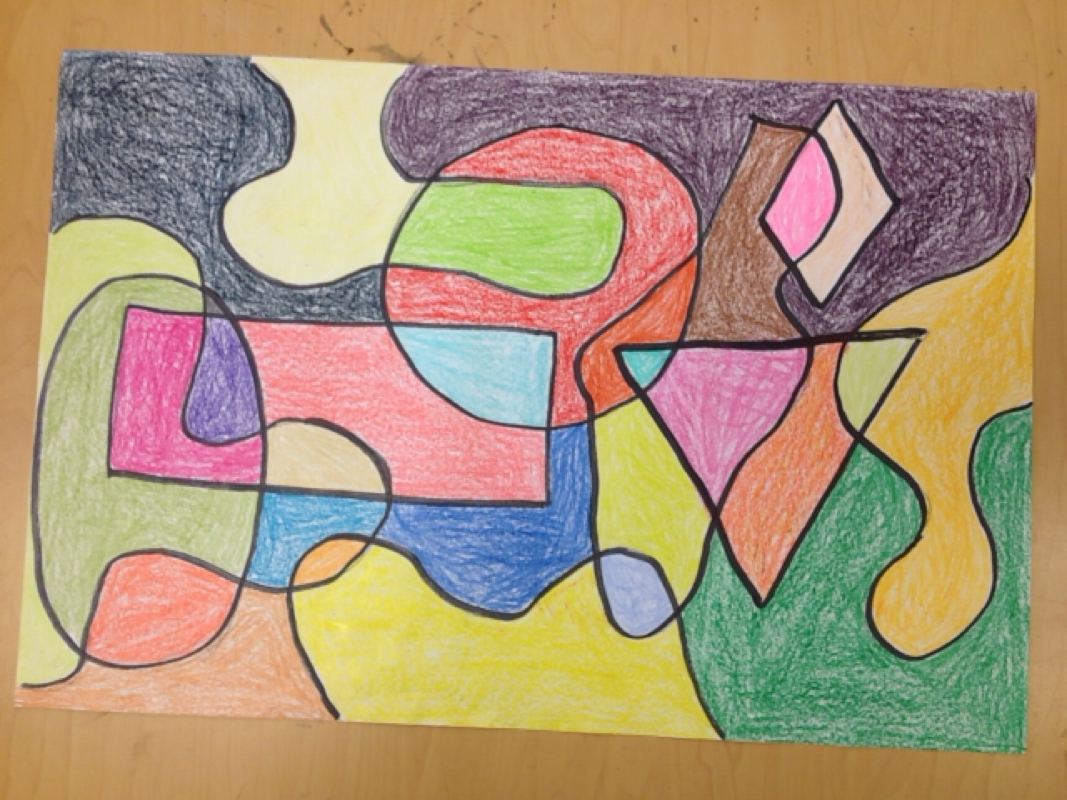
Abstract colorful artwork combining geometric and organic shapes outlined in black lealart.weebly
Shapes can be either positive or negative. Positive shapes are the main subjects with defined forms, while negative shapes are the spaces around and between objects. Artists use shapes to build patterns, create repetition, and symbolize ideas—circles for unity, triangles for stability. Geometric shapes provide a symbolic and synthetic feeling, while acute angled shapes with sharp points are perceived as dangerous, and curvilinear shapes appear chaotic and adaptable.fiveable+2
Artists like Wassily Kandinsky, Henri Matisse, and Piet Mondrian have used distinctive, often geometric shapes to create their iconic works.study
Form: The Third Dimension
While shape is two-dimensional, form introduces the third dimension. Form is a three-dimensional object with volume, possessing height, width, and depth. These objects include cubes, spheres, cylinders, pyramids, and organic forms.study+2vecteezy
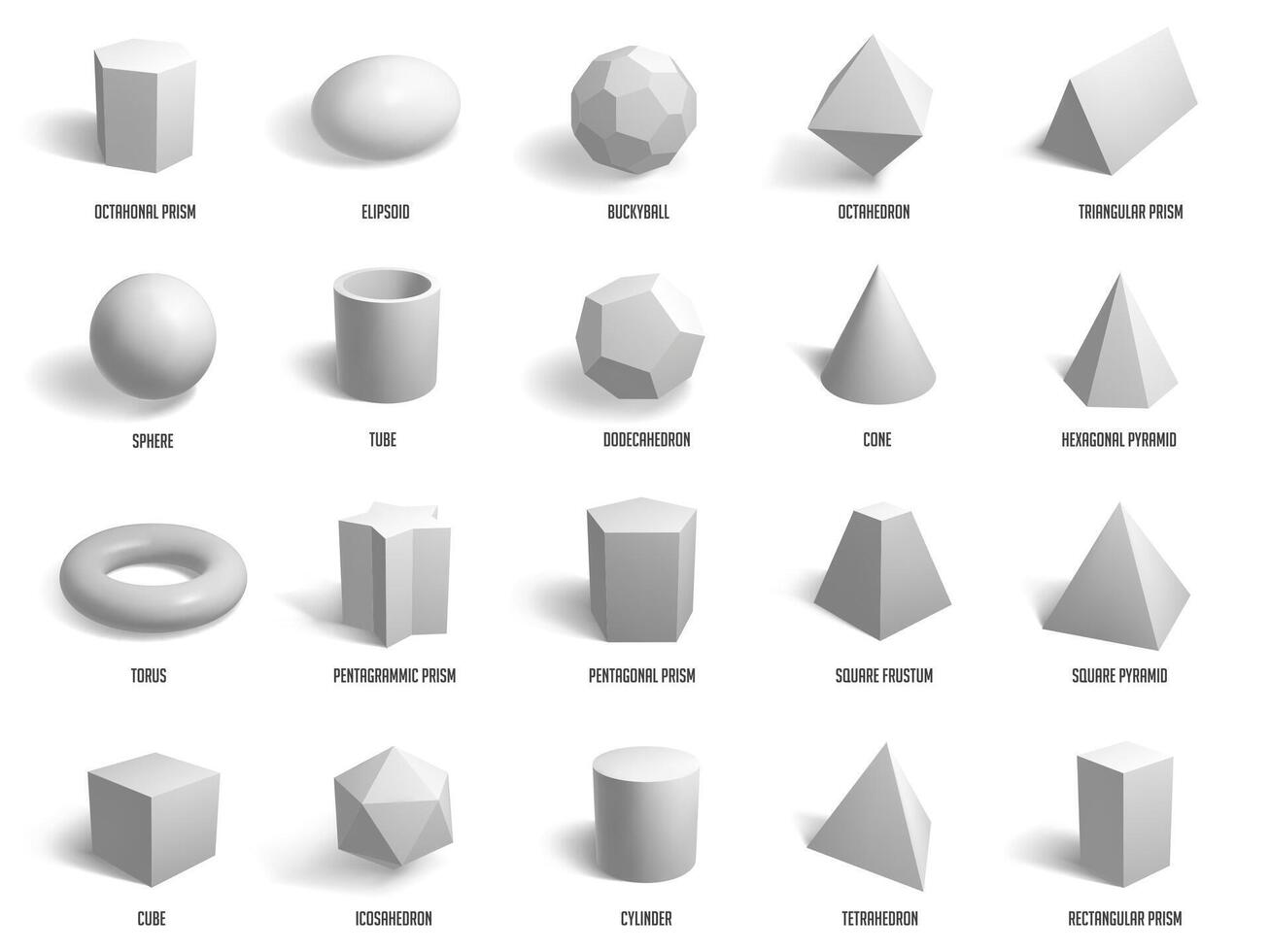
Various basic three-dimensional geometric shapes illustrating the element of form in art vecteezy
Form is most closely connected with three-dimensional works like sculptures, but painters also create the illusion of form on flat canvases through the strategic use of light, shadow, and value. By adding highlights and shadows, artists transform flat shapes into objects that appear to have volume and exist in three-dimensional space.study+2
A gradual transition in value conveys gently rounded surfaces (soft edges), while rapid value transitions indicate sharp edges (hard edges). This manipulation of light and shadow is what allows two-dimensional artworks to appear lifelike and dimensional.onlineartlessons
Space: Creating Depth and Dimension
Space refers to the area within, around, and between objects in an artwork. It encompasses both the distance between objects (perspective) and their size relationships (proportion). Artists working on two-dimensional surfaces must employ various techniques to create the illusion of three-dimensional space.fiveable+1angelaedward
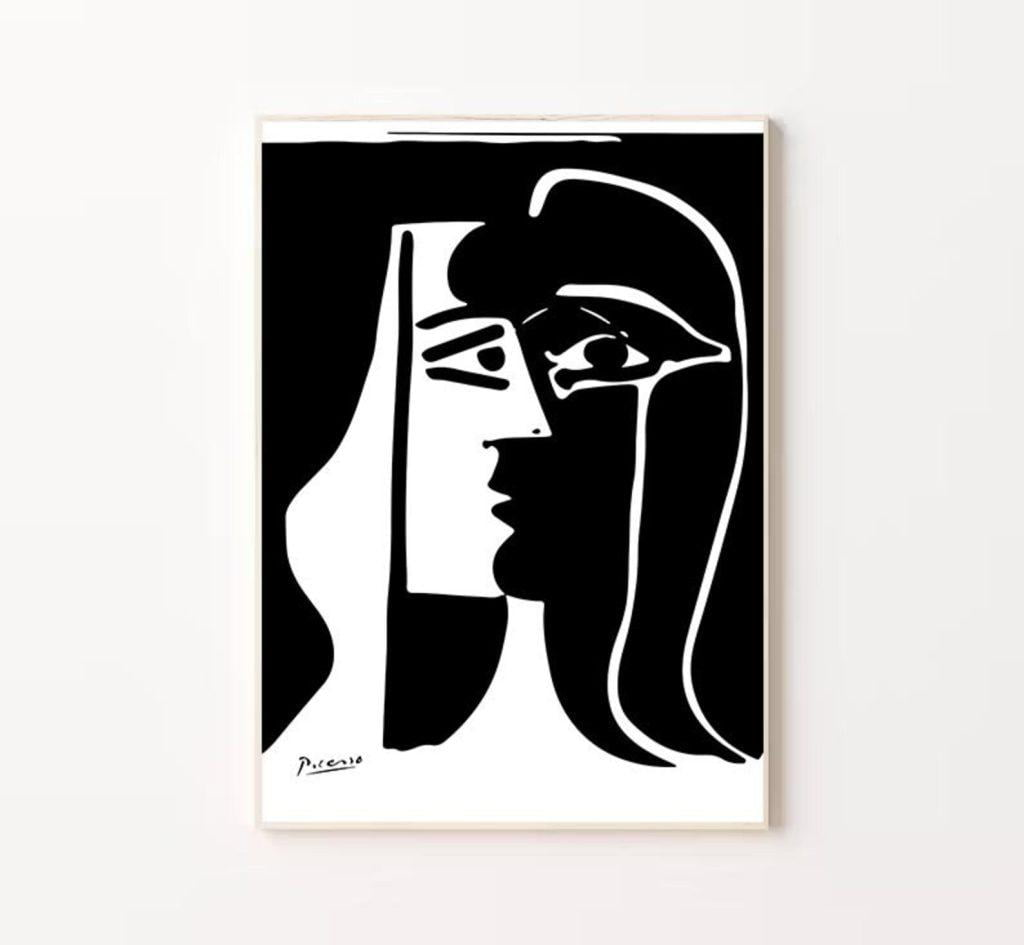
Artwork illustrating the use of positive and negative space to create dual face profiles in high contrast black and white angelaedwards.co
These techniques include:
Overlapping: When objects are drawn on top of one another, viewers interpret this as depth, with one object in front of another.
Placement: Objects positioned higher in the picture plane appear more distant than those placed lower.
Size: Smaller objects appear farther away than larger ones.
Detail: Distant objects show less detail than close-up objects.
Color and Value: Objects in the distance typically appear cooler (bluer) and lighter, while close objects appear warmer and darker.
Perspective: Linear and two-point perspective create systematic depth on flat surfaces.
Space is also categorized as positive space (areas occupied by subjects) and negative space (empty areas). Artists like JMW Turner and Gustave Caillebotte have masterfully used space to create unusually developed depth or alter perceptions based on viewing angles.
Value: Light and Shadow
Value describes the lightness or darkness of tones or colors, ranging from pure white through middle gray to pitch black. It’s one of the most critical elements because getting values right is often more important than getting colors right in painting—value is what makes it possible to show three-dimensional forms on two-dimensional surfaces.massart+1
Value creates contrast, defines light sources and shadows, and establishes focal points. A highlight appears brighter when surrounded by dark values, while decreasing contrast makes objects visually recede. High-contrast areas naturally draw the viewer’s eye, making value placement crucial for directing attention to focal points.fiveable+1
Paintings that use predominantly darker values are called “low key” paintings, creating heavy, mysterious, or dramatic moods. “High key” paintings utilize lighter values, evoking feelings of lightness, spirituality, or airiness. Artists like Caravaggio have masterfully employed high-contrast values to create dramatic lighting effects.
Color: Light’s Reflection
Color is an element consisting of three properties: hue (the color name), value (lightness or darkness), and intensity or saturation (brightness and purity). Color is present when light strikes an object and reflects back into the eye.massart+1
Colors are classified into several categories:
Primary colors (red, yellow, blue) are fundamental and cannot be created by mixing other colors.wikipedia
Secondary colors result from mixing two primary colors in equal amounts.wikipedia
Tertiary colors emerge from mixing primary and secondary colors.
Complementary colors are opposites on the color wheel.
Analogous colors are adjacent on the color wheel.
Color powerfully evokes emotions and moods. Warm colors (reds, oranges, yellows) convey energy and passion, while cool colors (blues, greens, purples) suggest tranquility and serenity. Artists use color to create contrast, establish emphasis, and symbolize concepts. Van Gogh’s bright, saturated colors contrast dramatically with Rembrandt’s muted, earthy palette, each creating entirely different emotional responses.fiveable
Texture: Surface Quality
Texture refers to the surface quality of an object, describing how things feel or appear as if they might feel if touched. Texture can be either tactile (actual physical texture you can feel) or visual (implied texture that looks like it has a certain feel but is actually smooth).massart+3slideshare
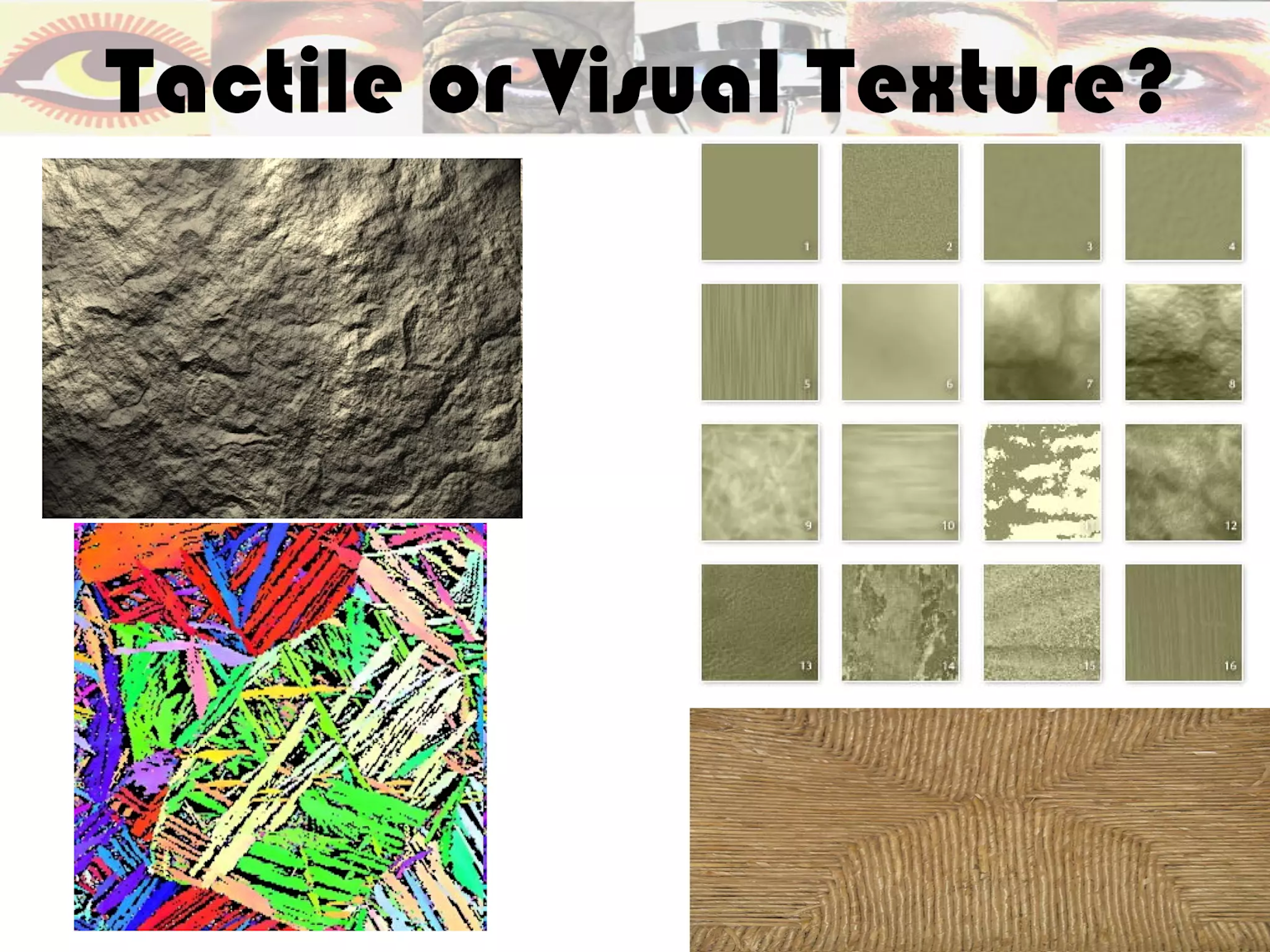
Examples of tactile and visual textures demonstrating the element of texture in art slideshare
Types of texture include rough, smooth, bumpy, fuzzy, glossy, and matte. Artists create texture through various techniques and materials—Van Gogh’s rough, impasto brushwork creates tactile texture, while smooth, polished surfaces characterize Brancusi’s sculptures. Texture adds visual interest and variety, creates realism or abstraction, and evokes tactile sensations even in two-dimensional works.fiveable
How the Elements Work Together
While understanding each element individually is essential, the true power emerges when artists intentionally combine them. Consider Van Gogh’s Starry Night—this masterpiece employs all seven elements working in harmony.slideshare+1bestofbharat
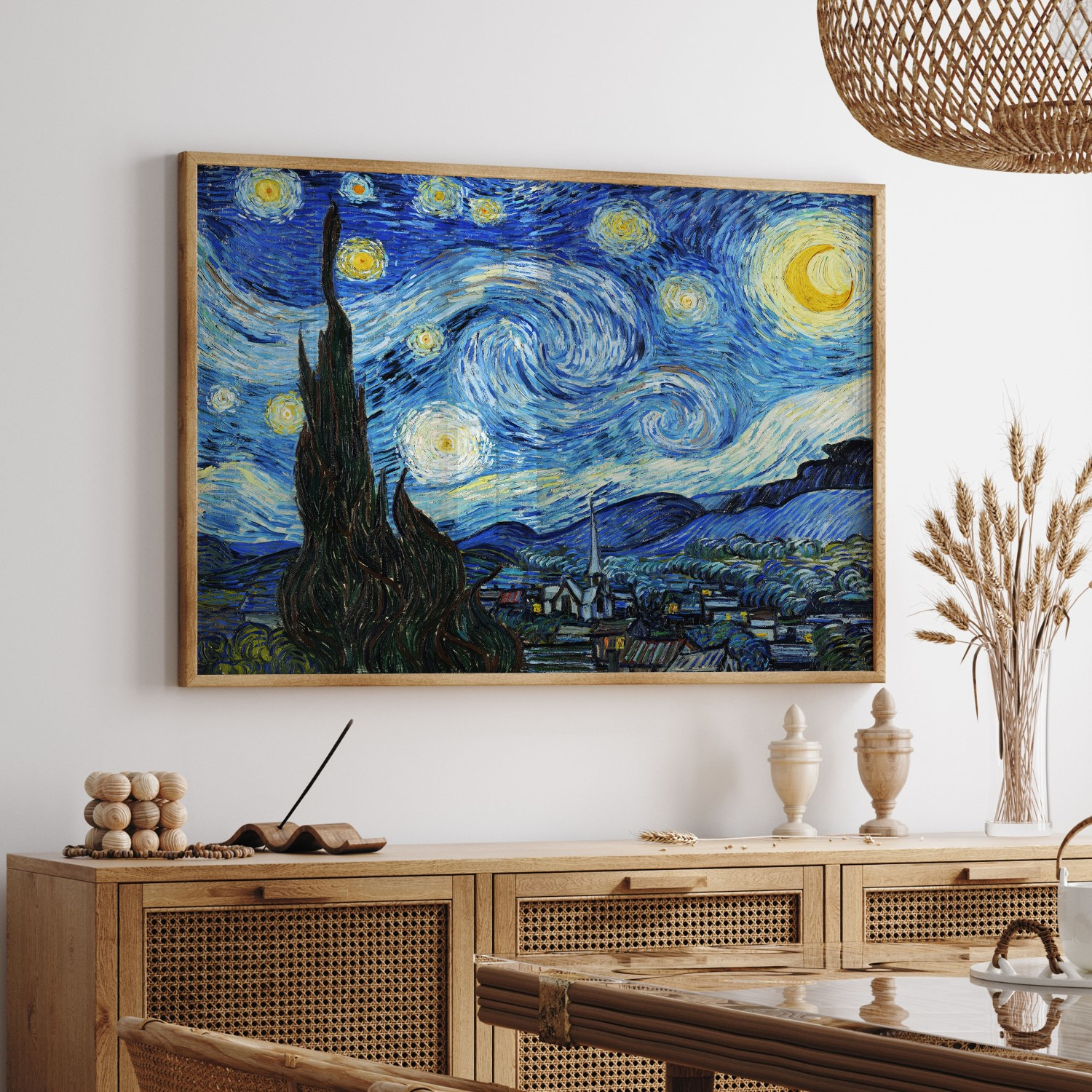
Vincent van Gogh’s ‘The Starry Night’ showcases expressive use of line, color, and texture, key elements of art bestofbharat
The painting uses curved and swirling lines created by bold brushstrokes to convey movement and energy. The imposing shape of the cypress tree directs attention to the stars. Form is suggested through the rolling hills and dimensional buildings. Space is created through overlapping and size variation. Value contrasts establish depth and drama. Color—predominantly blues and yellows—evokes emotion and atmosphere. Finally, the thick, impasto texture adds physical dimension to the canvas.slideshare+1
Applying the Elements in Your Art Practice
Whether you’re creating portraits, landscapes, abstract compositions, or teaching students, keeping these seven elements in mind significantly improves artistic outcomes. By consciously considering how you use line, shape, form, space, value, color, and texture, you gain control over how viewers’ eyes move through your artwork and what emotions your pieces evoke.
A painting might emphasize space, color, and line while being less concerned with form and texture. A sculpture naturally focuses on form, space, and texture. A pencil drawing relies heavily on line, value, and shape but typically doesn’t use color or three-dimensional form. The key is understanding which elements serve your artistic vision and using them intentionally.study
The Elements Across Art Movements
Different art movements and styles have emphasized various elements. Impressionism emphasizes color and light with loose, visible brushstrokes creating texture and movement. Cubism fragments forms into geometric shapes with muted color palettes emphasizing structure. Abstract Expressionism features spontaneous, gestural use of line and color to express emotions. Minimalism reduces compositions to essential geometric shapes and solid colors, emphasizing the relationship between positive and negative space. Pop Art employs bold, graphic color and shape celebrating popular culture.fiveable
Conclusion
The seven elements of art are the essential vocabulary through which artists communicate their vision. Like learning any language, mastering these elements takes practice, observation, and intentional application. Whether you’re sketching in your notebook, painting a canvas, or sculpting clay, these building blocks are always present, waiting to be arranged in infinite combinations.
By understanding line, shape, form, space, value, color, and texture—and more importantly, how they interact—you unlock the ability to create more compelling, intentional, and successful artwork. These elements are not restrictive rules but liberating tools that empower you to transform your creative vision into visual reality.study+2
As you continue your artistic journey, keep returning to these fundamentals. They are the foundation upon which all great art is built, from the masterpieces hanging in museums to the next creation waiting on your easel.
